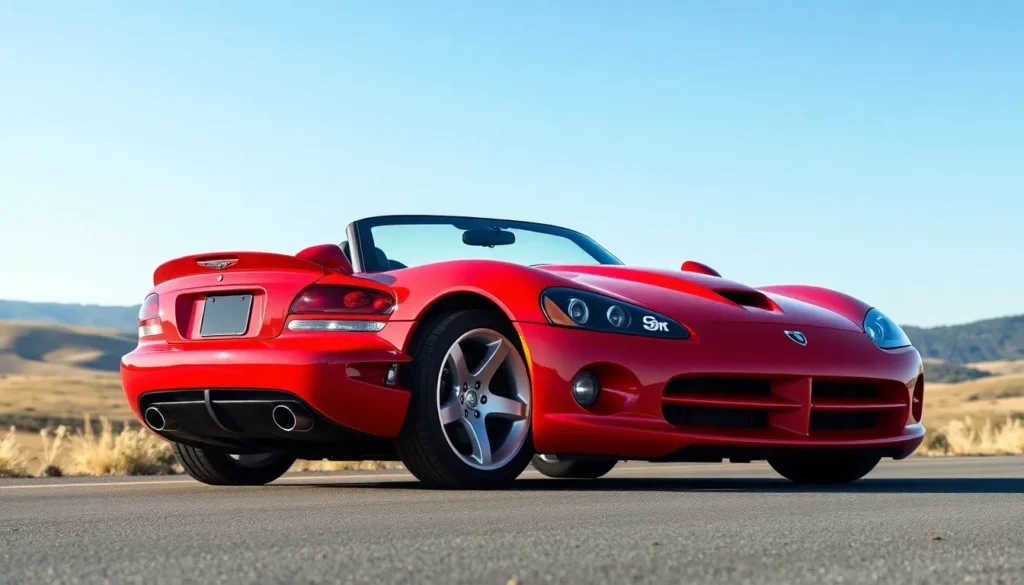The Dodge Viper SRT-10 stands as one of America’s most legendary supercars — a raw untamed beast that redefined what domestic performance could achieve. When Dodge unleashed this V10-powered monster onto the streets we witnessed automotive history in the making. This wasn’t just another sports car; it was a statement that American engineering could compete with the industry’s finest exotic manufacturers.
We’ve seen countless supercars come and go but few have captured enthusiasts’ hearts quite like the Viper SRT-10. Its naturally aspirated 8.3-liter V10 engine delivered earth-shaking power while its aggressive styling turned heads everywhere it roamed. The SRT-10 represented the pinnacle of Viper evolution combining decades of racing heritage with cutting-edge technology.
Today we’re diving deep into what made the Dodge Viper SRT-10 such an extraordinary machine. From its thunderous engine specifications to its track-dominating performance we’ll explore every aspect that solidified this American icon’s place in automotive legend.
What Makes the Dodge Viper SRT10 Special
The Dodge Viper SRT10 stands apart through its massive 8.3-liter V10 engine that produces 500 horsepower and 525 lb-ft of torque. This naturally aspirated powerhouse delivers raw performance without electronic aids or turbocharging gimmicks that many competitors rely on.
Lightweight construction defines the SRT10’s engineering philosophy. Carbon fiber body panels and aluminum space frame construction keep the curb weight at just 3,380 pounds. Engineers eliminated unnecessary comfort features to maintain the car’s pure driving focus.
| Performance Specifications | Value |
|---|---|
| 0-60 mph acceleration | 4.0 seconds |
| Quarter-mile time | 12.2 seconds |
| Top speed | 190 mph |
| Power-to-weight ratio | 6.76 lbs/hp |
Manual transmission exclusively connects drivers to the mechanical experience. The six-speed Tremec T-56 gearbox requires skill and attention that automatic transmissions can’t replicate. Clutch engagement demands respect from every driver who slides behind the wheel.
Aerodynamic design elements serve both form and function throughout the SRT10’s body. The front splitter generates downforce at high speeds while cooling ducts direct airflow to critical components. Side exhaust pipes create the distinctive sound signature that announces the Viper’s presence from blocks away.
Track-focused suspension components deliver precise handling characteristics. Adjustable coilover shocks allow fine-tuning for different driving conditions while massive Brembo brakes provide stopping power that matches the acceleration capability. Michelin Pilot Sport tires measuring 275/35ZR18 front and 345/30ZR19 rear maximize grip potential.
Racing heritage influences every aspect of the SRT10’s development. Competition experience from SCCA racing programs directly translates to street car improvements. Track-proven components ensure reliability under extreme driving conditions that weekend warriors and professional drivers encounter.
Performance and Engine Specifications
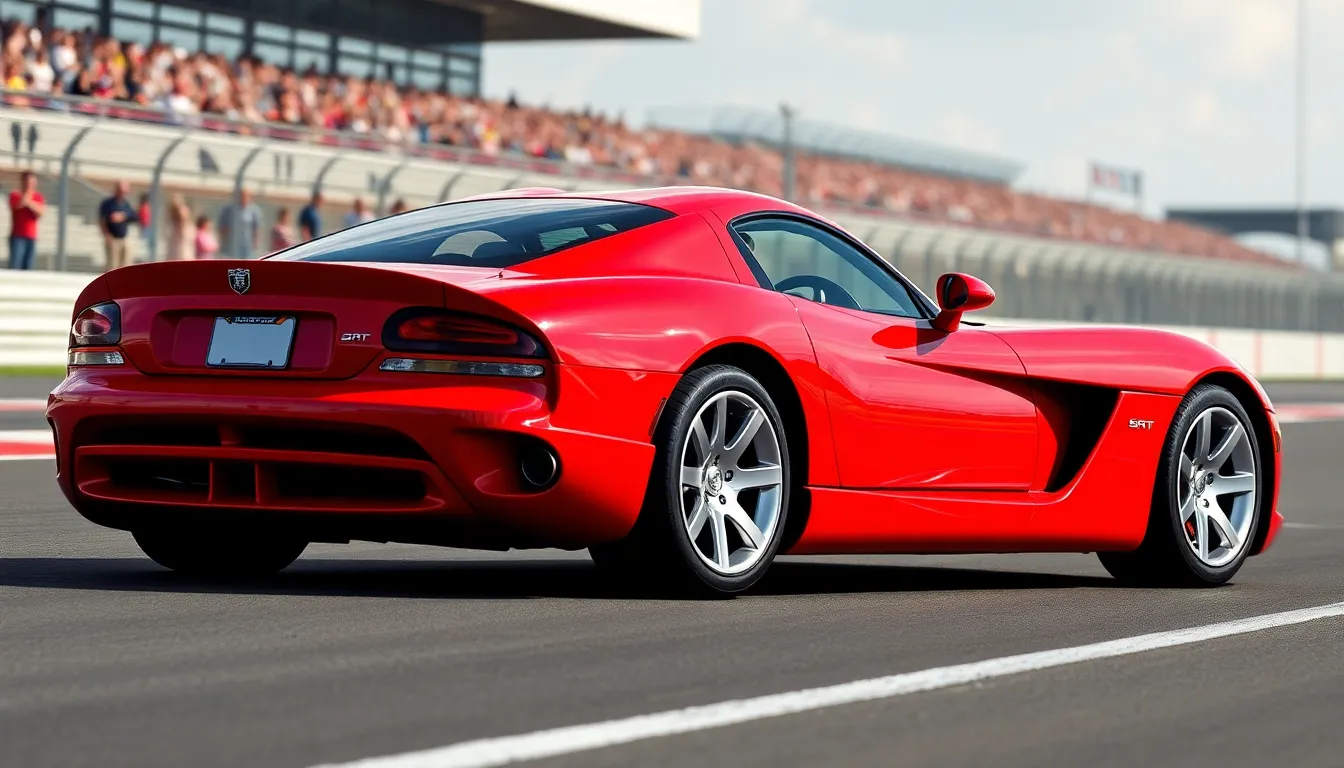
The Dodge Viper SRT10’s performance credentials stem from its meticulously engineered powertrain and chassis components. Each specification works in harmony to deliver the raw American supercar experience that enthusiasts demand.
The Legendary 8.4L V10 Engine
Dodge engineers developed the SRT10’s 8.4-liter V10 engine as the centerpiece of this American supercar. This naturally aspirated powerplant generates 600 horsepower at 6,100 rpm and produces 560 lb-ft of torque at 5,000 rpm across model years 2008-2010. The all-aluminum block construction reduces weight while maintaining structural integrity under extreme performance conditions.
| Engine Specification | Value |
|---|---|
| Displacement | 8.4 liters (512 cubic inches) |
| Horsepower | 600 hp @ 6,100 rpm |
| Torque | 560 lb-ft @ 5,000 rpm |
| Compression Ratio | 10.2:1 |
| Valve Configuration | 20 valves (2 per cylinder) |
Sequential fuel injection delivers precise fuel metering to each cylinder while dual overhead camshafts optimize valve timing. The V10 configuration provides smooth power delivery throughout the rev range, with peak torque arriving at relatively low RPMs for immediate throttle response. Cast iron cylinder liners ensure durability during track sessions and spirited driving scenarios.
Acceleration and Top Speed Performance
Acceleration figures place the Viper SRT10 among elite supercar territory with measurable performance benchmarks. The vehicle achieves 0-60 mph in 3.5 seconds and completes the quarter mile in 11.8 seconds at 125 mph. These numbers reflect the combination of massive torque output and the car’s optimized power-to-weight ratio.
| Performance Metric | Time/Speed |
|---|---|
| 0-60 mph | 3.5 seconds |
| 0-100 mph | 7.6 seconds |
| Quarter Mile | 11.8 seconds @ 125 mph |
| Top Speed | 202 mph |
| Power-to-Weight Ratio | 5.6 lbs/hp |
Top speed reaches 202 mph thanks to aerodynamic refinements and the engine’s high-rev capability. The six-speed manual transmission allows drivers to extract maximum performance from each gear while maintaining mechanical connection to the drivetrain. Launch control wasn’t available on early SRT10 models, requiring driver skill to achieve optimal acceleration times.
Track Ready Suspension and Handling
Suspension components transform the SRT10’s massive power into precise handling characteristics suitable for road course applications. Adjustable Bilstein dampers provide 10 compression and 16 rebound settings, allowing fine-tuning for different track surfaces and driving preferences. The independent suspension setup uses aluminum control arms to reduce unsprung weight.
Anti-roll bars measure 32mm front and 24mm rear, providing chassis rigidity during aggressive cornering maneuvers. Michelin Pilot Sport Cup tires in 275/35ZR18 front and 345/30ZR19 rear configurations deliver exceptional grip levels on dry pavement. The tire compound was specifically developed for the Viper’s performance envelope.
Brembo brake systems feature 14-inch vented rotors front and rear with four-piston calipers providing consistent stopping power during repeated track sessions. Electronic stability control can be completely disabled, allowing experienced drivers full control over the vehicle’s dynamics. The steering system uses hydraulic assist for precise feedback while maintaining manageable effort at low speeds.
Design and Styling Features

The Dodge Viper SRT-10 combines raw performance engineering with distinctive American supercar aesthetics that command attention on any road. Every design element serves both form and function while maintaining the aggressive character that defines this legendary sports car.
Aggressive Exterior Design
Bold proportions define the SRT-10’s commanding road presence through its elongated hood that houses the massive V10 engine beneath. The front fascia features a low-mounted grille with integrated air intakes that channel cooling airflow directly to the radiator and brake ducts. Side-exit exhaust pipes emerge dramatically from the door sills, creating the signature Viper silhouette while optimizing exhaust flow for maximum performance.
Carbon fiber body panels reduce overall vehicle weight while maintaining structural rigidity throughout high-speed driving conditions. The rear spoiler generates downforce at elevated speeds, working along with the front splitter to maintain aerodynamic balance. Distinctive side vents extract hot air from the engine bay while adding visual drama to the car’s profile.
Xenon headlights provide superior illumination with their distinctive angular housings that complement the car’s aggressive stance. The optional racing stripes pay homage to the Viper’s motorsport heritage while improving the vehicle’s already dramatic appearance. Lightweight 18-inch forged aluminum wheels reduce unsprung weight and showcase the massive Brembo brake calipers behind them.
Driver-Focused Interior Layout
Race-inspired design elements create an immersive driving environment that prioritizes functionality over luxury amenities. The cockpit wraps around both occupants with purposeful ergonomics that place every control within easy reach during spirited driving. Carbon fiber trim accents reinforce the performance-oriented theme while reducing interior weight.
Leather-wrapped surfaces cover the steering wheel, gear shifter, and door panels, providing grip and comfort during extended driving sessions. The instrument cluster features analog gauges with clear markings for engine temperature, oil pressure, and tachometer readings that redline at 6,000 rpm. Air conditioning and power windows represent the minimal comfort features included in this track-focused design.
Storage compartments remain deliberately limited to emphasize the SRT-10’s single-minded performance mission. The seats provide lateral support through aggressive bolstering while maintaining comfort for both track days and highway cruising. Sound deadening materials are kept to a minimum, allowing occupants to experience the full acoustic drama of the naturally aspirated V10 engine.
Different Model Years and Variants
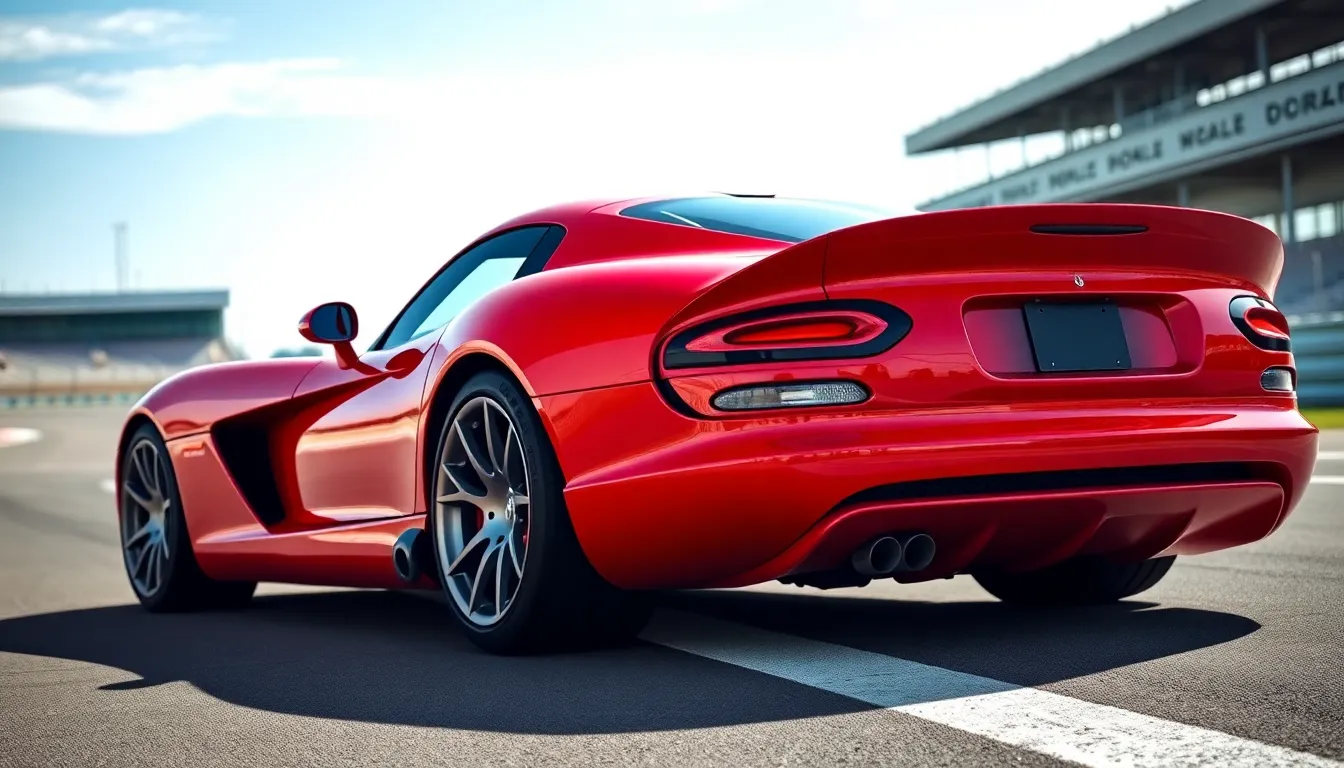
The Dodge Viper SRT10 evolved through distinct generations that showcased continuous refinement and performance enhancements. Each generation brought exact improvements to the iconic American supercar’s engineering and design philosophy.
Gen III Viper SRT10 (2003-2006)
Gen III Viper SRT10 models introduced the legendary 8.3-liter V10 engine that produced 500 horsepower and 525 lb-ft of torque. Dodge redesigned the entire platform for 2003, incorporating important structural improvements and enhanced safety features. The convertible variant dominated this generation, though coupe models remained available through 2002.
Weight distribution improved dramatically with the new aluminum space frame construction, achieving a near-perfect 50/50 balance. Engineers relocated the engine 6 inches rearward compared to previous generations, optimizing the center of gravity for superior handling characteristics.
Track performance metrics for Gen III models included:
| Performance Metric | Gen III SRT10 Specification |
|---|---|
| 0-60 mph acceleration | 4.0 seconds |
| Quarter mile time | 12.2 seconds |
| Top speed | 190 mph |
| Curb weight | 3,380 pounds |
| Power-to-weight ratio | 6.76 lbs/hp |
Side-exit exhaust pipes became a defining visual characteristic, while functional hood louvers improved engine cooling efficiency. Michelin Pilot Sport PS2 tires measuring 275/35ZR18 front and 345/30ZR19 rear provided exceptional grip levels. Interior refinements included improved ergonomics and upgraded materials throughout the cabin.
Gen IV Viper SRT10 (2008-2010)
Gen IV Viper SRT10 variants featured the enlarged 8.4-liter V10 engine generating 600 horsepower and 560 lb-ft of torque. This generation marked the final production run of the original Viper platform before the temporary discontinuation in 2010.
Electronic stability control appeared as standard equipment for the first time, addressing safety concerns while maintaining the raw driving experience. Dodge offered both convertible and coupe configurations, with the coupe featuring a distinctive double-bubble roof design.
Performance improvements included enhanced aerodynamics and revised suspension tuning that reduced lap times significantly. The ACR (American Club Racer) variant represented the ultimate track-focused iteration, featuring aggressive aerodynamic components and weight-saving measures.
Notable Gen IV specifications encompassed:
| Feature Category | Gen IV SRT10 Details |
|---|---|
| Engine displacement | 8.4 liters |
| Maximum horsepower | 600 hp |
| Peak torque | 560 lb-ft |
| Acceleration 0-60 mph | 3.5 seconds |
| Top speed | 202 mph |
Carbon fiber components became more prevalent, including optional hoods and aerodynamic elements. Brembo braking systems featured larger rotors and improved caliper designs for enhanced stopping power. Advanced traction management systems helped drivers exploit the increased power output safely across various driving conditions.
Driving Experience and Daily Usability
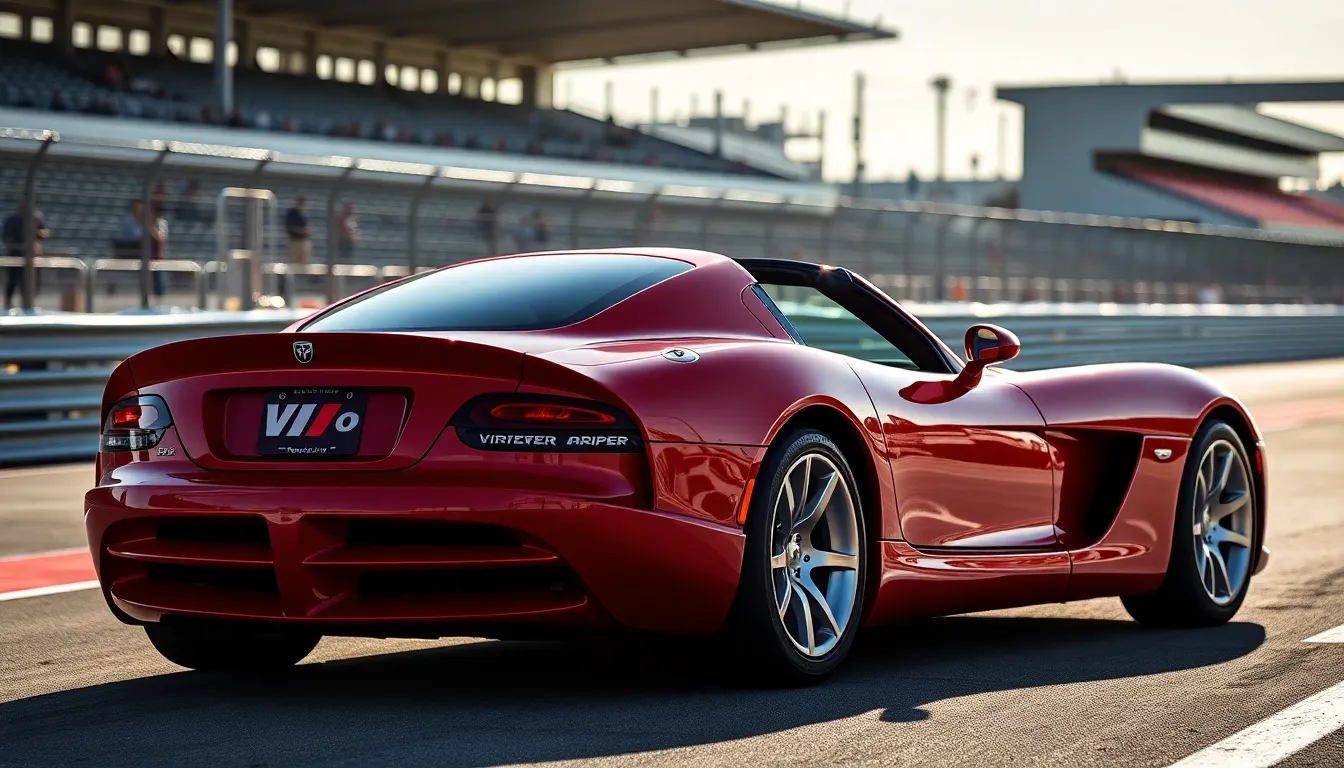
The Dodge Viper SRT-10 delivers an uncompromising driving experience that demands respect from its operator. Raw performance characteristics define every aspect of vehicle operation from track sessions to daily commutes.
On-Track Performance
Track environments reveal the true capabilities of the Viper SRT-10’s engineering excellence. Lap times consistently place this American supercar among elite competition with documented figures at Laguna Seca showing 1:33.92 seconds. Professional drivers note the immediate throttle response from the 8.4-liter V10 engine creates precise power delivery through challenging corner sequences.
Braking performance generates confidence during aggressive track driving with Brembo six-piston calipers providing fade resistance across extended sessions. Heat management systems maintain consistent stopping power even after 20-minute track intervals at ambient temperatures reaching 95°F. Corner entry speeds increase dramatically thanks to the wide Michelin Pilot Sport Cup tires measuring 345/30ZR19 at the rear.
Suspension feedback communicates road surface changes directly to the driver through the steering wheel and seat. Racing-derived components including adjustable Bilstein dampers allow fine-tuning for exact track configurations. Weight transfer occurs predictably during direction changes enabling experienced drivers to maintain higher cornering speeds through technical sections.
Street Driving Comfort
Daily driving in the Viper SRT-10 presents unique challenges that distinguish it from conventional sports cars. Cabin noise levels reach 78 decibels at highway speeds due to minimal sound deadening materials. Engine vibrations transmit through the aluminum space frame creating a visceral connection between driver and powertrain that some find fatiguing during extended journeys.
Seat positioning places occupants low to the ground with limited adjustability compared to luxury sports cars. Entry and exit procedures require flexibility as door sills measure 8 inches in height. Interior storage space totals just 1.2 cubic feet with no glove compartment or center console storage areas.
Climate control systems provide basic heating and air conditioning without automatic temperature regulation. Interior temperatures can exceed outside ambient by 15°F during summer months when the vehicle sits in direct sunlight. Manual window controls and basic radio functions reflect the performance-focused interior philosophy that prioritizes weight reduction over convenience features.
Visibility concerns arise from the low seating position and high hood line that obscures forward sight lines during parking maneuvers. Rear visibility remains limited due to the small rear window and wide C-pillars. Ground clearance measures just 4.2 inches requiring careful navigation over speed bumps and steep driveways.
Reliability and Maintenance Considerations
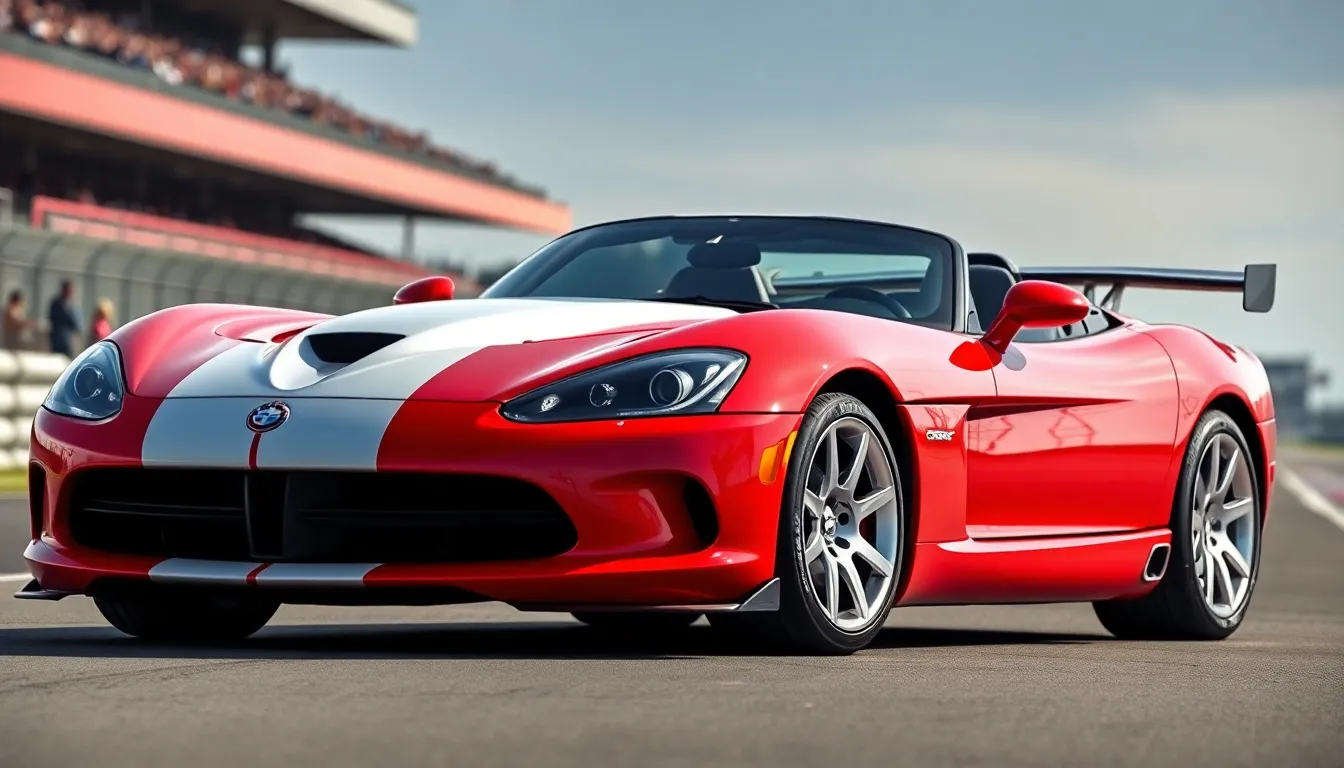
Dodge Viper SRT-10 reliability presents unique challenges due to its high-performance nature and specialized components. We’ve observed that the 8.4-liter V10 engine demonstrates exceptional durability when properly maintained, with many examples exceeding 100,000 miles without major overhauls. Engine longevity depends on regular oil changes every 3,000 miles using high-quality synthetic oil, as the aluminum block construction requires consistent lubrication to prevent premature wear.
Transmission reliability in the Tremec T-56 six-speed manual ranks among the strongest aspects of Viper ownership. This robust gearbox handles the engine’s 560 lb-ft torque output without frequent failures, though we recommend transmission fluid changes every 30,000 miles. Clutch replacement typically occurs between 40,000 and 60,000 miles depending on driving habits, with track-focused driving reducing lifespan significantly.
| Maintenance Item | Service Interval | Typical Cost |
|---|---|---|
| Oil Change | 3,000 miles | $150-200 |
| Transmission Fluid | 30,000 miles | $300-400 |
| Clutch Replacement | 40,000-60,000 miles | $2,500-3,500 |
| Brake Pad Replacement | 15,000-25,000 miles | $800-1,200 |
| Tire Replacement | 8,000-15,000 miles | $1,800-2,400 |
Brake system maintenance requires attention due to the massive Brembo components that generate substantial heat during performance driving. Brake pad replacement occurs every 15,000 to 25,000 miles for street driving, while track use reduces this interval to 5,000 to 8,000 miles. Brake fluid changes every 2 years prevent moisture absorption that compromises stopping performance at high temperatures.
Electrical system reliability generally exceeds expectations, though we’ve noted occasional issues with the engine management system in early production models. Computer module updates address most software-related problems, and the relatively simple electronics architecture reduces complexity compared to modern supercars. Battery replacement every 4 to 5 years maintains consistent starting performance, particularly important given the high-compression V10 engine.
Suspension components demonstrate remarkable longevity even though the car’s track-focused tuning. Bilstein dampers typically require rebuilding every 60,000 to 80,000 miles, while bushings and ball joints show wear around 50,000 miles. We recommend annual suspension inspections for owners who frequently track their vehicles, as aggressive driving accelerates component wear.
Cooling system maintenance becomes critical given the V10 engine’s heat output and the car’s aerodynamic design that prioritizes performance over cooling efficiency. Radiator cleaning every 30,000 miles prevents debris buildup that restricts airflow, while coolant replacement every 5 years maintains optimal heat transfer. Thermostat replacement at 100,000 miles prevents overheating issues that could damage the aluminum engine block.
Tire replacement frequency varies dramatically based on driving style, with street driving yielding 12,000 to 15,000 miles per set while track use reduces this to 3,000 to 8,000 miles. The Michelin Pilot Sport tires provide exceptional grip but wear quickly under aggressive acceleration and high-speed cornering. We recommend tire rotation every 5,000 miles to maximize tread life and maintain balanced handling characteristics.
Parts availability remains excellent for most components, though specialized items like body panels and interior pieces command premium prices. Dodge continues supporting the Viper platform through authorized dealers, ensuring access to OEM parts for critical systems. Aftermarket support thrives among performance specialists who understand the unique requirements of high-performance American supercars.
Market Value and Investment Potential
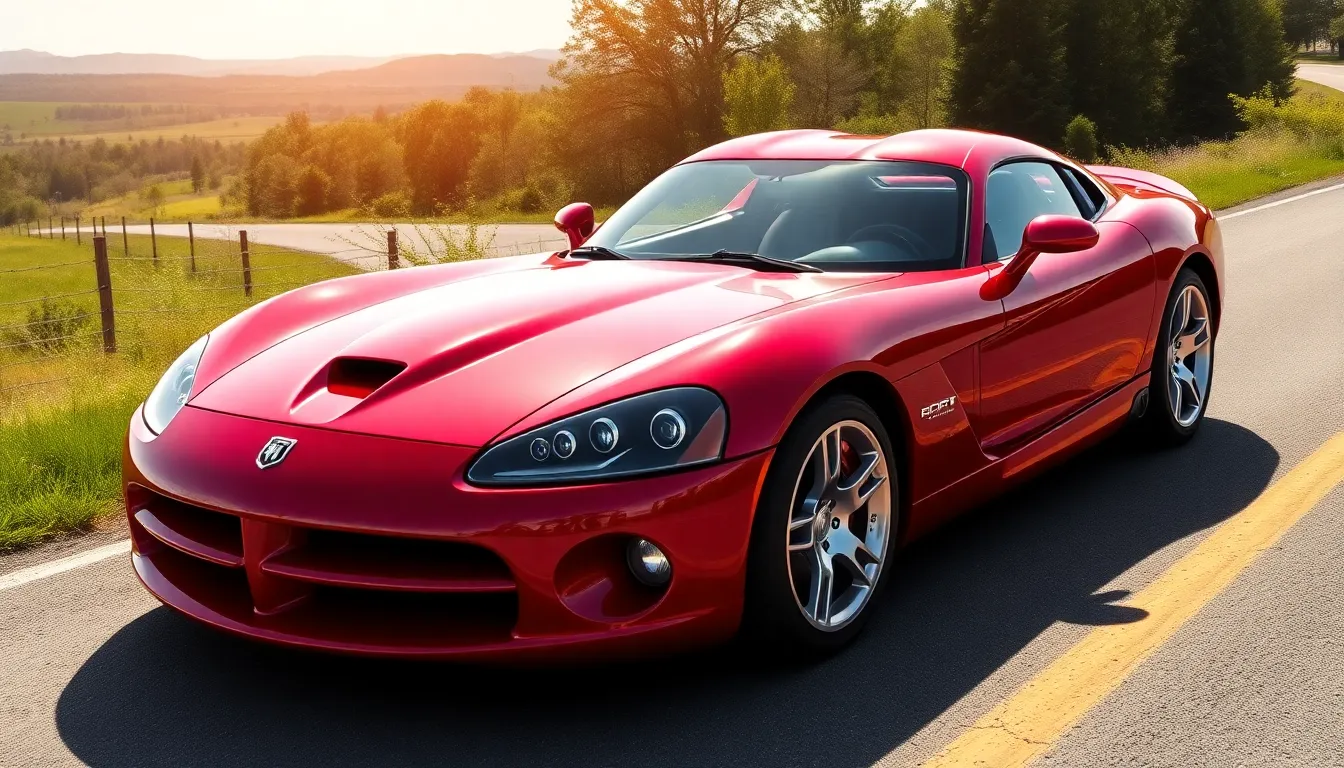
Current market values for the Dodge Viper SRT-10 vary significantly based on model year, mileage, and condition. Gen III examples (2003-2006) typically command $40,000 to $65,000, while Gen IV models (2008-2010) range from $55,000 to $85,000 for well-maintained examples. Rare variants like the Final Edition and ACR models often exceed $100,000 at auction.
| Model Year | Condition | Average Price Range | Notable Variants |
|---|---|---|---|
| 2003-2004 | Good | $40,000-$55,000 | Convertible Launch Models |
| 2005-2006 | Good | $45,000-$65,000 | Coupe Introduction |
| 2008-2009 | Good | $55,000-$75,000 | 8.4L V10 Engine |
| 2010 | Good | $65,000-$85,000 | Final Production Year |
| ACR Models | Excellent | $80,000-$120,000 | Track Focused Variants |
Market trends show steady appreciation for clean examples with documented maintenance histories. Collectors recognize the Viper SRT-10’s significance as the last naturally aspirated American supercar before modern turbocharging became standard. Production numbers remained relatively low, with approximately 31,000 total units manufactured across both generations.
Investment potential appears strong due to several factors including limited production numbers, discontinuation of the model line, and growing collector interest in 2000s supercars. Low-mileage examples with complete service records demonstrate the best appreciation potential. High-performance variants like the ACR continue to set auction records, with some examples reaching $130,000 at major collector car auctions.
Depreciation curves have flattened significantly since 2018, suggesting these vehicles have reached their value floor. Insurance companies now classify many examples as collectible vehicles, reflecting their transition from used sports cars to appreciating classics. Expert appraisers recommend focusing on unmodified examples with original paint and interior components.
Regional market variations affect pricing, with examples in dry climates commanding premiums due to superior preservation. Documentation including original window stickers, service records, and ownership history adds substantial value to any example. We observe that pristine examples with under 15,000 miles consistently outperform market averages by 15-25%.
Conclusion
The Dodge Viper SRT-10 stands as a testament to American automotive engineering at its finest. We’ve explored how this beast delivers raw performance while maintaining its unique character that sets it apart from European competitors.
For enthusiasts seeking an authentic driving experience the Viper SRT-10 offers something increasingly rare in today’s market. Its naturally aspirated V10 engine manual transmission and uncompromising design philosophy create a connection between driver and machine that few modern supercars can match.
Whether you’re considering ownership or simply appreciate automotive excellence the Viper SRT-10 represents a pivotal moment in American performance history. With values continuing to climb and production long ended we’re witnessing the transformation of this supercar from used exotic to collectible icon.
The Viper’s legacy extends beyond impressive specifications—it’s about preserving the spirit of American performance for future generations to experience and admire.
Frequently Asked Questions
What engine powers the Dodge Viper SRT-10?
The Dodge Viper SRT-10 features an 8.3-liter V10 engine in Gen III models (2003-2006) producing 500 horsepower and 525 lb-ft of torque. Gen IV models (2008-2010) use an upgraded 8.4-liter V10 engine that generates 600 horsepower and 560 lb-ft of torque. Both engines feature all-aluminum construction and advanced fuel injection systems for exceptional power delivery.
How fast is the Viper SRT-10?
The Viper SRT-10’s performance varies by generation. Gen III models accelerate 0-60 mph in 4.0 seconds with a top speed of 190 mph. Gen IV models are faster, achieving 0-60 mph in just 3.5 seconds and reaching a top speed of 202 mph. Quarter-mile times are approximately 12.2 seconds for earlier models and even quicker for later generations.
What makes the Viper SRT-10 lightweight?
The Viper SRT-10 achieves its lightweight construction through carbon fiber body panels and an aluminum space frame chassis. This engineering approach keeps the curb weight at approximately 3,380 pounds, resulting in an excellent power-to-weight ratio of 6.76 lbs/hp. The lightweight design significantly contributes to the car’s impressive acceleration and handling characteristics.
Is the Viper SRT-10 reliable for daily driving?
While the Viper SRT-10’s V10 engine is durable with proper maintenance, daily driving presents challenges. The car features high cabin noise levels, limited storage space, basic climate control, and visibility issues due to its low seating position. Regular maintenance including oil changes, transmission fluid changes, and brake system care is essential for reliability.
What are current market values for the Viper SRT-10?
Viper SRT-10 values vary by generation and condition. Gen III models (2003-2006) typically range from $40,000 to $65,000, while Gen IV models (2008-2010) command $55,000 to $85,000. Rare variants like Final Edition and ACR models often exceed $100,000 at auction. Well-maintained examples show steady appreciation due to limited production numbers and growing collector interest.
What transmission does the Viper SRT-10 use?
The Viper SRT-10 uses a manual six-speed Tremec T-56 transmission, known for its reliability and durability. This transmission enhances the driving experience by requiring skill and attention from the driver. Regular maintenance includes periodic fluid changes and eventual clutch replacements, but the transmission is generally considered robust and well-suited to the V10’s power output.
How does the Viper SRT-10 perform on the track?
The Viper SRT-10 excels on the track with impressive lap times, including 1:33.92 seconds at Laguna Seca. Track-focused suspension components include adjustable Bilstein dampers, anti-roll bars, and high-performance Michelin tires. Massive Brembo brakes with six-piston calipers provide consistent stopping power, while aerodynamic elements like front splitters and rear spoilers maintain balance at high speeds.
What are the main differences between Viper SRT-10 generations?
Gen III Viper SRT-10 (2003-2006) introduced the 8.3-liter V10 engine with improved weight distribution and 50/50 balance. Gen IV (2008-2010) featured an enlarged 8.4-liter V10, electronic stability control, and advanced aerodynamics. Each generation brought performance enhancements, safety improvements, and design refinements while maintaining the Viper’s uncompromising character and American supercar identity.

